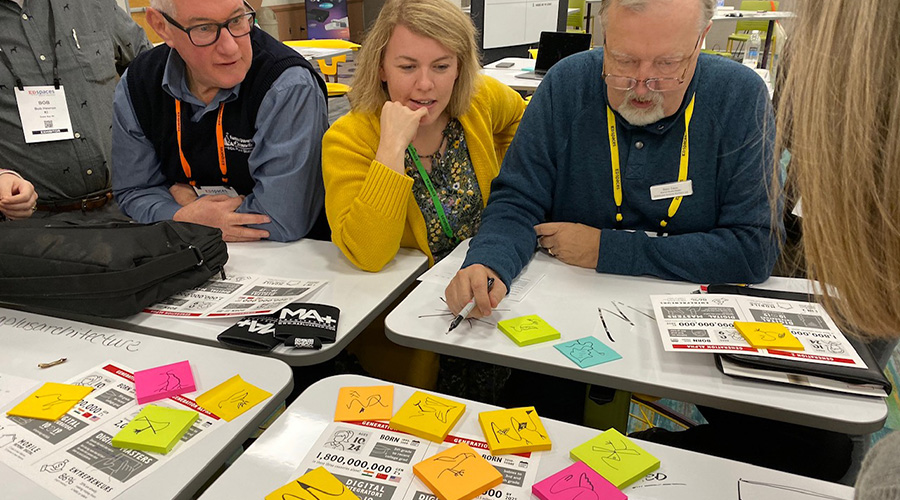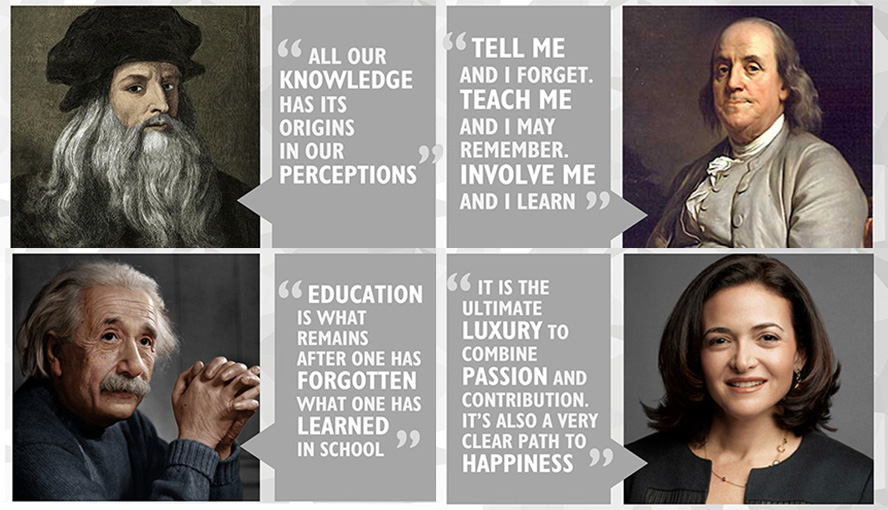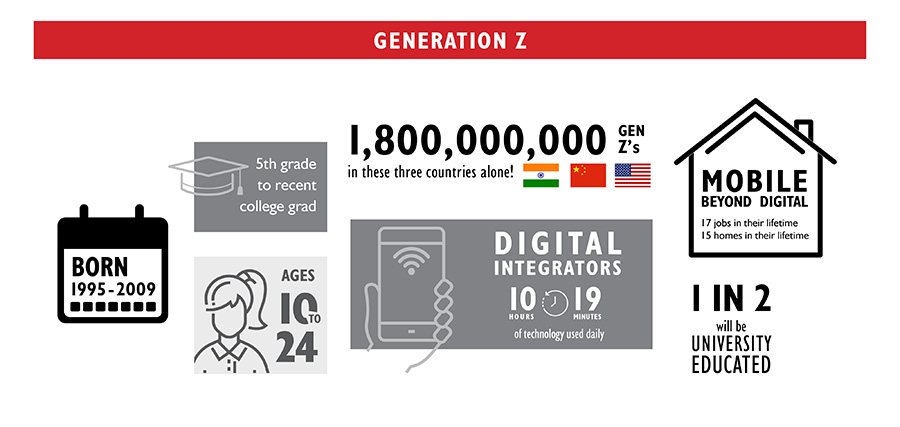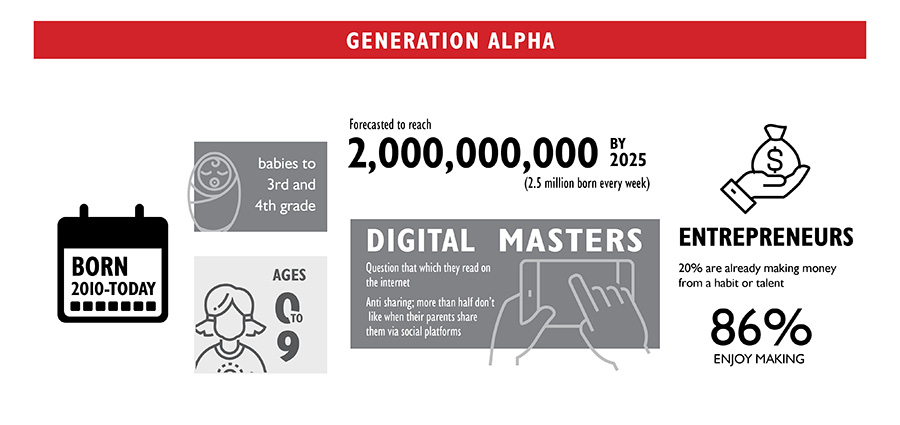- What's New
- Pricing & Purchasing
- Lead Times
- Literature & Samples
- Services & Warranties
- Careers
- Find a Rep
Designing for A(lpha) to Z

“Tell me and I forget. Teach me and I remember. Involve me and I learn.”
This quote by Benjamin Franklin perfectly captures KI’s intentions as we work with educators across the country. We’ve made it our goal to not prescribe but contribute to the re-imagining of learning and instruction throughout our schools.
We recently had the opportunity to formally contribute to the conversation at EDspaces, the premier event for the educational facilities marketplace. KI had the honor of not only exhibiting at the conference but also facilitating a workshop that coincided with the EDspaces objective of exploring how the convergence of technology, space and pedagogy impact learning.
The workshop, entitled “Designing for A(lpha) to Z”, a cheeky play on words, focused on Generation Z (born 1995-2009) and Generation Alpha (2010-today). The hour-long design sprint brought together teachers, administrators, designers and architects who worked within a 3-part framework of questions aimed at defining learning:
- Where have we been?
- What are we hearing?
- Where are we going?
We applied an iterative design process to the sprint, forming design teams among the brave attendees who were forewarned our session would not be your typical conference lecture. Instead, it involved active thinking and creativity.
Where have we been?
We began by considering the words of Leonardo DaVinci, Benjamin Franklin, Albert Einstein and Sheryl Sandberg. Design teams were asked to define learning based on “where we have been”. Exploring the thoughts of historical and modern leaders allowed teams to consider how learning often aligns with human passion which align with experiences and experiments critical to the learning journey. Learning requires more than listening and note taking. To truly learn, one has to imagine, create and contribute. As one participant wrote, “learning is not exclusive to school”.

What are we hearing?
Design teams then moved on to explore users - defined as “one who uses,” and dove into what we are hearing from Generations Z and Alpha. The goal of this portion of the sprint was to identify generational traits that may impact learning design and to also hear first-hand from students. We listened to real interviews, featuring a Gen Z student and a Gen Alpha student, asking each two simple questions:
- What do you like about school?
- What do you wish was different about school?
Check out generational traits and our student interviews below:


In both instances, we used the power of WHY to dig a little deeper and then asked the teams to form definitions surrounding the user needs that were just explored.
Where are we going?
As we moved on to the final question, “where are we going?” teams were given just five minutes to form a future vision of learning.
They came back with truly compelling learning patterns and visions that pulled from the past and the present to lay a foundation for the future. The results were honest and authentic, highlighting the tension between learning and learning within the constraints of school.
We took the final visions/definitions and converted each into “HMWs” and “WMs”, which stand for How Might We… and What Might… questions which help drive additional creative ideation sessions. KI’s EDspaces workshop was a brief glimpse into a design process that requires multiple sessions of ideation, allowing participants to back away and then return to themes, further exposing drivers for design and innovation.
Final Definitions, and HMW’s/WM’s:
Definition 1: Learning is Borderless: both physical and on the digital continuum
HOW MIGHT WE...design for borderless learning?
Definition 2: We need to learn how to be human in the 21st century
HOW MIGHT WE...learn to be human in the 21st century?
Definition 3: Demonstrating mastery without grades
HOW MIGHT WE...demonstrate mastery without grades?
Definition 4: Designing a healthier risk climate for teachers
HOW MIGHT WE...design a safe risk climate for teachers?
Definition 5: A 21st century teacher is a coffee house barista
WHAT MIGHT...a 21st century “barista” teacher look like? How might they teach?
Definition 6: From scarcity to surplus with information (who controls it and how it gets used)
WHAT MIGHT...we do with a surplus of information?
Definition 7: Foundational learning that empowers intentional choice
HOW MIGHT WE...design a foundation that fosters authentic pathways and learning choices?

We’re always amazed by the thought-provoking challenges brought to life in this workshop. For instance, “learn how to be human in the 21st century,” is a bold statement and somewhat shocking, but it is consistent with the current backlash to our instant access to and usage of mobile devices.
What does it mean to be human? It makes us step back and not only evaluate our children’s tech access but also us, as adults. We’re on our phones as much, if not more, than kids these days. It’s a societal question and issue – how do we connect with one another when these tools are always at our disposal and literally at our finger tips?
Previously, we’ve talked about Self Determination Theory which holds that humans need three basic things in life in order to be content:
- The need to feel competent in what we do
- The need to feel authentic
- The need to feel connected to others
The question above asks us to really identify if technology helps or hinders personal development.
“How might we…demonstrate mastery without grades? This question gave us goosebumps. In a world where we can individualize and personalize everything (news sources, tv ads, Netflix playlists, etc.), why wouldn’t every student’s learning path be individualized? While social and emotional learning can’t be forgotten, do we not have an opportunity to develop student’s at their correct place, aiding them in “learning to be human” in this new-age?
We want to thank those of you who contributed to our workshop. We truly believe that your participation was something more, something bigger. We hope that our reputation of using the power of design to bring shared contribution to the future of learning in schools is still refreshing, and we promise to keep moving the iterative nature of this creation forward in 2020 and beyond. The act of playing, making and designing with you allows us to harness the power of a bigger community; a community that is boldly re-imaging the future of learning in schools.
Subscribe
Stay up to date with the latest trends and more.
